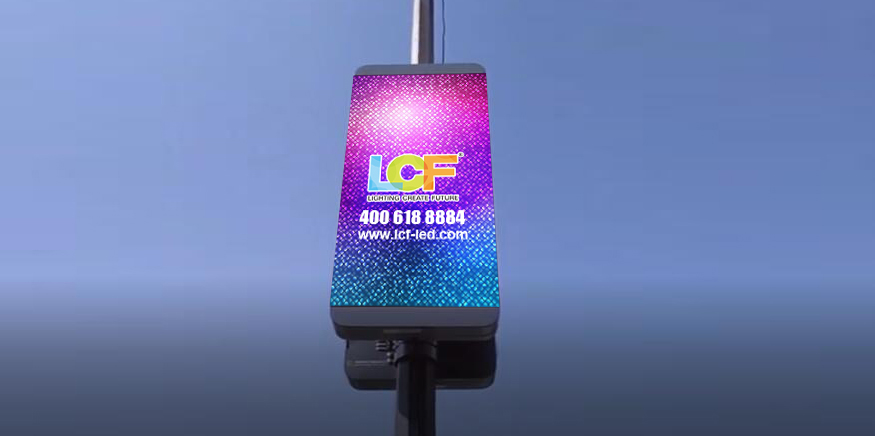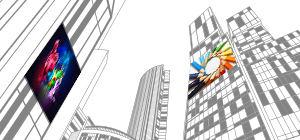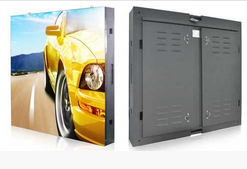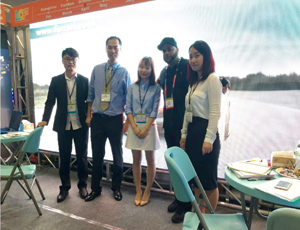Publisher: Supplier of LED Display Time: 2017-03-13 10:00 Views: 2133
With the rapid development of modern society, coupled with the increasing maturity of small-pitch LED display technology, the dot pitch of small-pitch LED displays is getting smaller and smaller. Now the market has launched P1.0, P1.2, P1.4 , P1.2, P0.9 and other small-pitch LED displays have been widely used in video conferencing, monitoring centers, monitoring centers, television media and other fields. And in the past few years, the small-pitch display has the advantages of high-definition display, high refresh rate, seamless splicing, good heat dissipation system, convenient and flexible disassembly and assembly, energy saving and environmental protection, etc. Furthermore, when it comes to the specifics of small-pitch LED screens The technology has become very popular. Many people “only know one but don't know the other.” The lack of professional display knowledge has led to a big blind spot in purchasing. So from a technical perspective, what are the advantages of small pitches that make people love it?

1. Printing technology:
The first thing I talked about is the printing technology of line spacing, and the welding quality of small-pitch display tubes. The correct PCB pad design will be communicated with the manufacturer and then implemented into the design. The opening size and printing parameters of the stencil are directly related to the amount of solder paste printed. Generally, display devices use electro-polished laser stencils with a thickness of 0.09-0.13mm, and stencils with a thickness of 0.7-1.2 are recommended for devices below 1020RGB. The thickness and opening size increase in proportion to the amount of tin. The quality of small-pitch LED soldering is closely related to solder paste printing. The use of printers with functions such as thickness detection and SPC analysis will play an important role in reliability. The slight deviation of the positions of the RGB components of the small-pitch display screen will cause the display of the screen body to be uneven, which will inevitably require the placement equipment to have higher precision.
2. Packaging technology:
Displays with density above P2 mostly adopt 1515, 2020, 3528 lamps, and the LED pin shape adopts J or L package. More emphasis is placed on soldering the pins, because the soldering area will reflect light and the ink color will be poor. It is necessary to increase the mask to improve its contrast. As a result, the density is further improved. Because the packaging technology of L and J cannot meet the demand well, the QFN packaging method must be adopted. The characteristic of this process is that there is no lateral welding pins and no reflection in the welding area, so that the display effect of the display screen is very good. In this way, the image quality of the display application will be more attractive and attractive than the previous display.
3. Box assembly:
The box body is formed by splicing different modules. The flatness of the box body and the gap between the modules are directly related to the overall effect of the box body after assembly. Aluminum plate processing boxes and cast aluminum boxes are currently widely used box types, and the flatness can reach within 10 wires. The splicing gap between the modules is evaluated by the distance between the nearest pixels of the two modules. If the two pixels are too close, they will be bright. Line, two pixels too far will cause dark lines. Before assembling, it is necessary to measure and calculate the seam of the module, and then select the metal sheet of relative thickness as the jig to be inserted in advance for assembling.
4. System card selection:
The light and dark lines and uniformity and color difference of the small-pitch display are the accumulated criticisms of LED device differences, IC current differences, circuit design layout differences, assembly differences, etc. Some system card companies can reduce light and dark lines, brightness, and chromaticity through software correction. all. A high-performance system card is selected to correct the brightness and chromaticity of the small-pitch LED display, so that the display can achieve better brightness and chromaticity uniformity, and a better display effect has been achieved.
"United", "Integrity" and "Development" have always been Lianchengfa's business philosophy for many years. To meet the customer’s requirements for the precision display, high efficiency, energy saving, stability, reliability, and extreme quality of small-pitch LED display products is the production requirements of small-pitch LED manufacturers. Only by making these better and more perfect can the small-pitch LED display be brought to life. The best display effect of the majority of users can make users feel relieved to buy and use comfortably!









